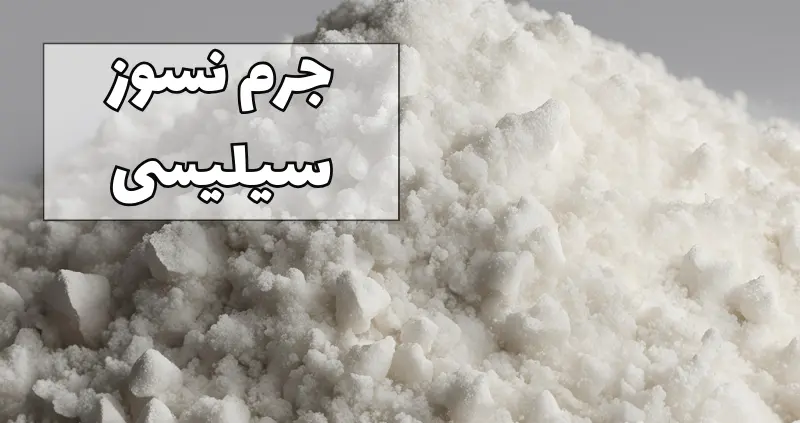
Silica refractories are tough protectors against fire and scorching heat. These amazing materials, with a simple appearance but with their extraordinary properties, play a key role in the development of modern industries. From metal casting furnaces to petrochemical reactors and even spacecraft engines, silica refractory mass with its unique resistance to extremely high temperatures provides the necessary protection and stability for these challenging systems.
But silica refractory mass is more than a simple material. This clever combination of silica, alumina and other additives results in a superior product with unique properties. From amazing resistance to thermal shock to electrical insulation and resistance to chemical corrosion, this multi-purpose material has a special place in various industrial applications. Recent advances in manufacturing technology have paved the way for designing more efficient and sustainable silica refractories.
Structure and chemical composition
Basically, silicon refractory mass is a complex combination of different materials, with silicon (SiO2) as its main component. Silica, which belongs to the family of metal oxides, plays a central role in the structure of this refractory mass due to its high melting point and good chemical resistance against acidic and alkaline substances. However, to improve properties and increase efficiency, other substances are usually added to the composition.
Alumina (Al2O3) can be mentioned among the common additives in silica refractory mass. This oxide composition, while increasing the strength and hardness of the mass, helps to improve the resistance against thermal shock. In addition, other materials such as calcium oxide (CaO), magnesium oxide (MgO) and iron oxide (Fe2O3) can also be added to the composition in order to control the physical and chemical properties. The exact ratio of these additives and the method of combining them with silica will have a significant impact on the final properties of the mass.
One of the key features of silica refractory mass is the unique crystal structure that is created by the high temperature baking and sintering process. In this process, silica particles and other components chemically bond with each other and form a porous solid network. This porous structure not only helps to increase resistance to thermal shock, but also provides the basis for the absorption of gases and liquids in its pores, which is of particular importance in some applications such as filtration.
The production process of silica refractory mass
The production of silica refractory mass is a multi-step process that begins with the selection and preparation of suitable raw materials. High-purity silica, usually obtained from natural sources such as sand or quartz rock, is the main raw material. In addition, other additives such as alumina, calcium oxide, magnesium oxide and iron oxide are also added to the formulation depending on the desired properties. These materials are first crushed, ground and turned into powder to prepare for the next steps.
After preparing the powder mixture, the next step is shaping. Various methods such as manual molding, hydraulic press or extrusion is used to shape the refractory mass into the desired shape such as blocks, pipes or more complex parts. After initial shaping, the pieces are dried to be ready for the baking stage. The baking process is carried out in industrial ovens at a very high temperature (usually 1200 to 1400 degrees Celsius).
During the firing process, complex chemical reactions occur that lead to the creation of ceramic bonds between different components and the formation of a porous solid network. This porous structure is one of the key features of silica refractory mass, which gives it high resistance to thermal shock. After baking, the parts are cooled and necessary quality control is performed on them to ensure that they meet the required standards. Finally, silica refractory mass is ready for use in various industrial applications.
Physical and chemical properties
One of the most obvious features of silica refractory mass is its extraordinary resistance to heat and thermal shock. Due to the high melting point of silica (about 1700 degrees Celsius), this mass can be exposed to very high temperatures without melting or degrading. In addition, its porous structure allows expansion and contraction during sudden temperature changes and prevents cracks or breaks. This unique property makes silica refractories very suitable for applications where thermal shocks occur.
Another important property of silica refractory mass is its high chemical resistance. Silica, as the main component, is resistant to many acidic chemicals, alkalis and salt solutions. This feature, together with the porous structure, allows the passage and flow of chemicals through the pores of the mass without harming it. For this reason, silica refractory mass has been widely used in chemical and petrochemical industries that deal with chemicals.
In terms of electrical properties, silica refractory mass is considered a very good insulator. Due to the presence of non-metallic silica in the composition, this material has low electrical conductivity. This feature is very important for applications that require electrical insulation, such as induction furnaces or heat exchangers. In addition, silica refractory mass also insulates heat flow well, which makes it suitable for covering and protecting metal structures against heat loss.
Know more: Alumina refractory mass
Applications of silica refractory mass
One of the most important applications of silica refractory mass is in metal and foundry industries. These refractory materials are used as the inner lining of metal melting furnaces, crucibles and casting molds. Their high resistance to very high temperatures and thermal shocks allows the melting and casting of all kinds of metals without worrying about damage to the equipment. In addition, silicon refractories are also used in steelmaking industries to cover furnaces and molten steel transfer paths.
In the chemical and petrochemical industries, the use of silica refractory mass is very common for the construction of reactors, heat exchangers, pipes and other equipment. High chemical resistance and stability against corrosive materials make these refractories ideal for applications dealing with a variety of chemicals. Also, in oil and gas refining units where extensive thermal processes occur, silica refractory mass plays a vital role in protecting the equipment.
Another application of silica refractory mass is in internal combustion engines and flight and space systems. In automobile and aircraft engines, these materials are used to cover the combustion chamber and hot components such as spark plugs and exhaust throats to protect them from damage caused by high temperatures and thermal shocks. In the aerospace industry, silicon refractory mass is used as a protective coating for rocket engines, heat shields and other parts exposed to extreme heat. Stability in supercritical temperature conditions makes these materials essential for such sensitive and challenging applications.
